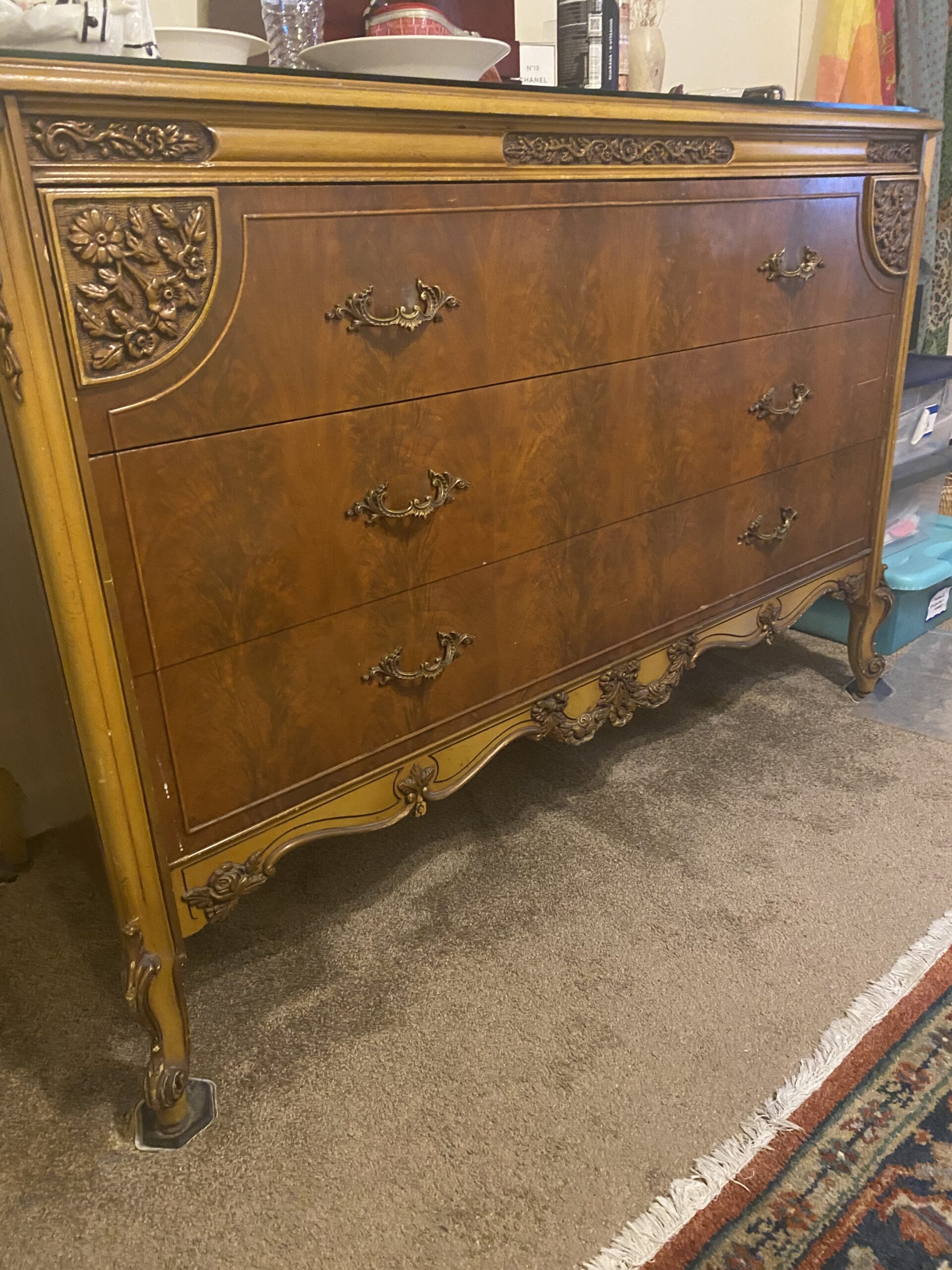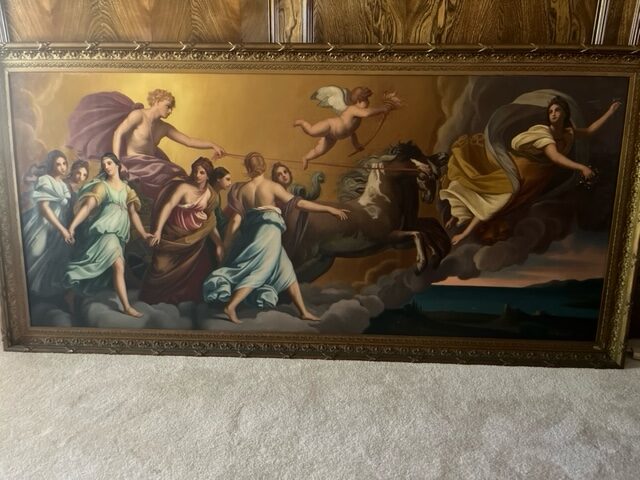2001 mixed media Peter Max
Markings on back of artwork
Entitled “Painting Man in Reeds”
11.5 by 16 inches
This is a report on the value of your artwork. In this document, I’ll describe what you have and do some research to come up with an estimate of how much it’s worth based on all the information you gave me. The different parts of this document make sure that I can make an accurate market valuation based on all the information I found during my research and evaluation.
Understanding the value of your pieces is important to you and will help with any future decisions. This report provides an appraisal estimate for each artwork, using US dollars as a world reserve currency; it does not aim at encouraging anyone to sell their art but rather provides valuable information on what steps should be taken if someone else wanted to.
Description, research, and provenance.
Identification with Artificial Intelligence Test
In the search for a match, Image Search uses AI to look through databases of images and attempt to find ones that are similar. It can do this by using various algorithms like pattern recognition or machine learning. Some results may show as “matches” if there is actually something in common between two photos, but others will remain unknown since they rely more on chance than anything else.
The results of the automatic recognition are not conclusive. If a match is found, it will be shown below:


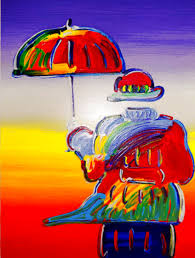




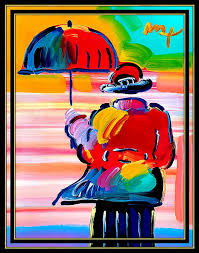
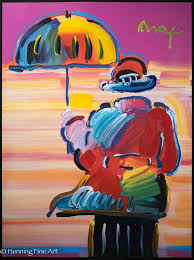
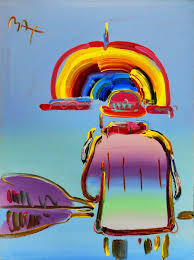
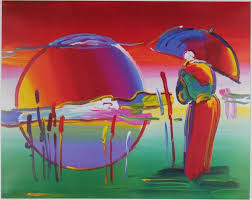






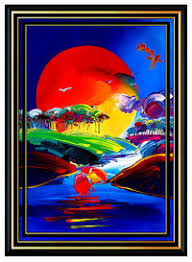


What specific information can we obtain from this test?
These results are linked to a piece of art that is possibly a reproduction, a limited edition print, or a regular print. To obtain the final conclusion, I need to keep going through the research and inspection processes. What we have here could be legal copies made by reputable artists who use the term “after.” The terms simply mean these pieces were produced following such-and-such a date, which would not necessarily mean they’re illicit duplicates since people can own more than one original painting even though there may only be one genuine version out there.
In this case the results are similar, but this piece is still an original artwork. Peter Max is known for creating variations of most iconic artworks. I don’t see any problem that this original artwork is linked to other artworks by Peter Max. In fact, I would be surprised of any other result.
What is the age of this artwork?
When trying to determine the age of an artwork, one of the first things to look at is the frame. The style of the frame, as well as the type of artwork and color palette, can give clues as to when it was created. For example, a piece from the Baroque period might have a gilded frame with a complicated design, while a piece from the Renaissance might have a simple wood frame. One way to date a painting is by looking at the frame construction. A frame made with modern metallic parts like flat-head nails, staples, or Phillips-head screws is likely from the 20th century. Older frames will have parts made of irregularly cut wood and metal that has been forged by hand. In some cases, you can see the absence of metallic parts. This is just one example of how the frame is put together and can be used to date a painting.
Based on the color palette and frame construction, I concluded that the painting was made in circa 2001.
Who has made this artwork?
I study and research the signature of artwork to see if it matches any known signatures. At this step, I also inspect papers with an artist’s name or other identifying features like stickers that may help me identify who made their work. Provenance, if any, is considered as an input to try to find out if the artist is relevant.
A picture of the signature is depicted below:
I can read the signature as:
Max
At this point, I can use the signature and try to find the artist’s name in a database of known-listed artists. Basically, it is a database with information about the names, surnames, origins, and biographies of the most well-known artists.
I found that the artist who painted this is Peter Max. Peter Max has been an iconic figure of modern art since the 1960s, with his vivid and dreamlike depictions of landscapes, cities, and people that are loved by many. His works incorporate a range of techniques such as airbrush, collage, stenciling, and layering to create images that blend classic styles with a vibrant, electric tone. Born in Germany in 1937, he moved to Israel at the age of seven, where he studied art for six years before immigrating to the U.S in 1953. Since then he has worked extensively in every medium from painting and sculpture to photography and printmaking. Throughout his career as an artist Peter Max has embraced diverse subjects ranging from social themes to cosmic visions that capture the imagination of people around the world. His work continues to evolve even today as his iconic style continues to influence generations of new artists.
Medium, frame construction, style, and frame
I can check if the style and type of painting match those of the artist referenced. The artwork of the iconic and legendary Artist Peter Max is truly unlike any other. His vibrant colors and transformative figures encapsulate all that he has been able to accomplish with his career. This particular work perfectly encapsulates the style of this master – from the use of blues, purples, and indigos, to his signature way of representing people as both wholesome and heroic at the same time. No other artist has been able to capture a unique spirit like Peter Max. His art will continue to set him apart for years to come.
Conclusion
This artwork by renowned artist Peter Max is a timeless masterpiece that perfectly encapsulates his iconic style. Boasting vibrant colors and dynamic visuals, it captures the eye of those who come to witness its presence. Not only does this make a beautiful addition to any wall, but it’s also an excellent investment for the coming year – chosen well by art enthusiasts looking to diversify their collections. Whether you want to marvel at its beauty or turn your attention towards what comes ahead, this artwork is sure to bring delight into any living space.
Final Appraisal Value ($)
15,000-18,000$
Appraisal Report made by:
Andrés Gómez
BSc, MSc, Expert Art Appraiser
10+ years of experience in Online Art Appraisals
100k+ Customers Served
Antique Store Owner
You can check my portofolio of past appraisals here:
https://www.appraisily.com/andres-portofolio/

Pictures received

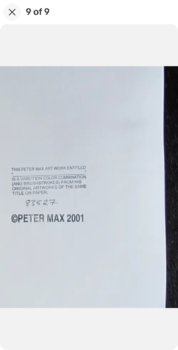

How to sell it
Antiques, art, and other collectibles are difficult items to sell online. This can take a lot of time. Be patient, but also make sure that the price you are asking for is the right one for your pieces of art. Consider the following tips on how to sell antiques and collectibles online: These tips will help maximize the price of your antique or collectible.
I would recommend selling it online. There are many ways to do this. For instance, Post an ad on Craigslist. Use eBay to sell antiques online. Post a listing on the Etsy marketplace. Sell with direct messages using Instagram. You can create a website using Squarespace or WordPress. Use Shopify to sell via a website, POS and social channels. List your items on Bonanza.com, Facebook Marketplaces, or Amazon Marketplaces. If you don’t have time, I would recommend starting with Facebook, Etsy, and Amazon.
The key to selling antiques online is to let potential customers know that you know what you are talking about. It’s much more difficult to sell something when the potential buyer can’t be sure it’s authentic. Sellers should use a well-thought out descriptive guide like this one. A good lead generation service should be helpful in establishing these relationships with online buyers, and an effective way to do this is through classified ads. If a buyer asks for more information, giving them some valuable facts well ahead of time will get you more sales because your reputation will increase and real customers are the ones who ask for more details.
In order to sell your antiques online, you will need to create a profile on the relevant forum (Etsy, Amazon, and FB). Make sure you add a high-resolution image of the product (include at least 3 detailed photos) and add some text. The text should be informative and straight to the point; nothing fancy or fluffy.
Asking price is a big factor in selling your antique. If your asking price is too high (fancy company stickers, missing parts, or chipped paint), you are unlikely to get many bids. If the asking price is too low, it will cost you money for repairs, shipping, and insurance. As a general rule, I would recommend setting an asking price that is 80% of the value of this report, so you will make the listing attractive from the beginning.
About the valuation method
I have considered the results from past auction sales to value this item. Keep in mind that the final price can be different from the asking price that you can find on the internet. You can see ads on the internet with different asking prices. However, a very high asking price doesn’t normally generate cash from a buyer.
That’s why our method comprises searching and comparing similar past sale results that had a buyer. That’s why we can provide an accurate estimation of this item.
For art pieces, remember that it isn’t the same as a print, a limited edition print, or an original art piece. If the artist can’t be found, the painting’s value is based on its quality and how interested the market might be in it.
To value this item, I have considered the results from past auction sales. Keep in mind that the final price can be different from the asking price that you can find on the internet. You can see ads on the internet with different asking prices. However, a very high asking price doesn’t normally generate cash from a buyer. That’s why our method comprises searching and comparing similar past sale results that had a buyer. That’s why we can provide an accurate estimation of this item.
Trying to determine the likely interests and tastes of a broad market can be tricky. You might not think collectors would be interested in works by a lesser-known artist, but they might be more interested than you think. You can’t know for sure without doing some market research. The same is true for artists whose work is in major museums or galleries but does not command high prices at auction or from dealers. Do not confuse the print with the original limited edition. Be aware that the value of a piece of art is linked to the artist’s name and reputation. The work’s quality and how interesting it might be are also important parts of its evaluation.
Quality art can be a good investment, but a large print or lithograph might not be as valuable. There are many different kinds of prints. Original works of art are worth the most, followed by limited edition prints, which can only be made in a certain number.
